The 2014 Razer Blade Review
by Brett Howse on October 10, 2014 9:00 AM EST- Posted in
- Notebooks
- Gaming
- Laptops
- Razer Blade
Gaming Performance
The Razer Blade is first and foremost a gaming laptop, and the GTX 870M inside is a substantial upgrade over the previous Blade’s GTX 765M. With 1344 CUDA cores, 3GB of GDDR5, 941 MHz clock, and a 192-bit memory bus, the 870M packs a punch, but with four times the number of pixels to drive in this year’s Blade, will it be enough?
To test this, we will run it through our normal suite of benchmarks to see where it stands. As our benchmarks top out at 1920x1080, I will also run it through a couple of the games at 3200x1800.
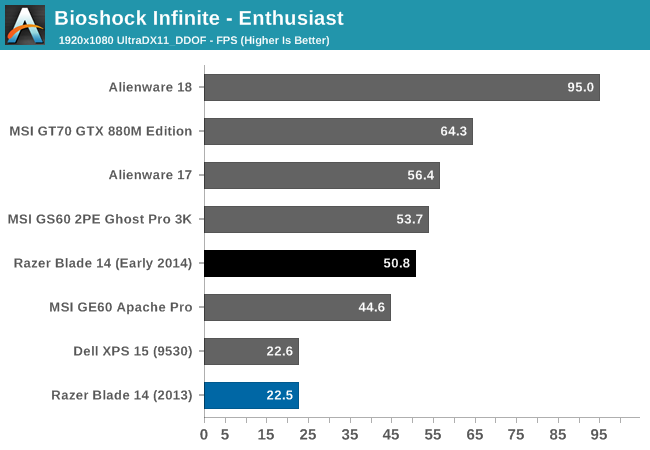
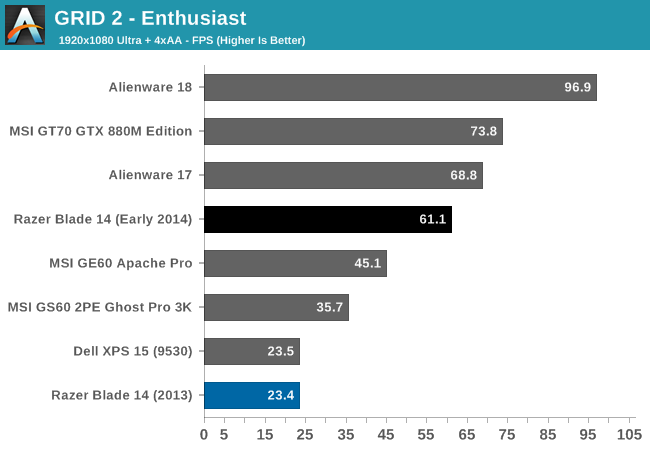
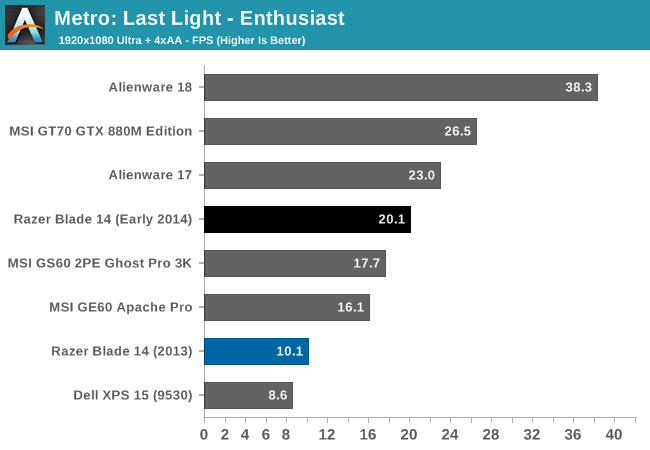
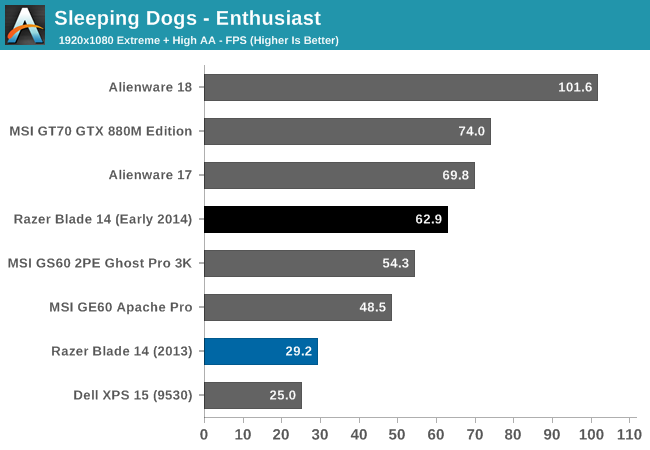

This is marketed and sold as a gaming system, and there are no complaints here. The step up to the GTX 870M over the last model’s GTX 765M means a massive increase in performance. The Razer Blade obviously cannot keep up with the likes of the Alienware 18 with its two GTX 780M cards in SLI, but that laptop is also a 12 pound behemoth. In fact, the Razer Blade outperforms all of the 15.6 inch laptops currently in Mobile Bench, and only loses to the 17 inch gaming machines.
However the obvious point has to be made that while the GTX 870M is much more powerful, it also has to drive four times the number of pixels as on the previous version of the Razer Blade. If you are looking at buying one of these, it is very likely you would want to game at the native resolution of the panel. In order to find out what the gaming experience would be for gaming at the native resolution, I used the GeForce Experience to customize the game settings for 3200x1800. If you are curious as to the number of options you can enable for 3200x1800, it is fairly impressive. Here's what GFE ended up recommending for two games:
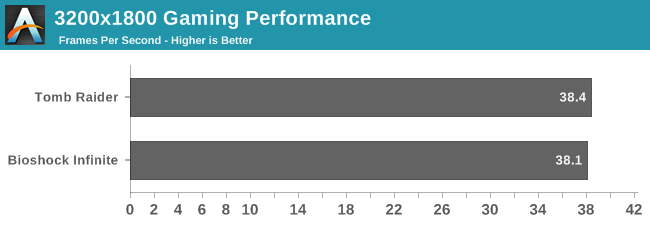
So, yes, you can game at the native panel resolution. You may not be able to enable every feature, but with GeForce Experience, you can custom tailor the settings quickly to get reasonable performance. GeForce Experience also has a slider where you can opt for more performance if you find the frame rate too low for your liking. By default, the slider is almost completely over to the Quality setting.


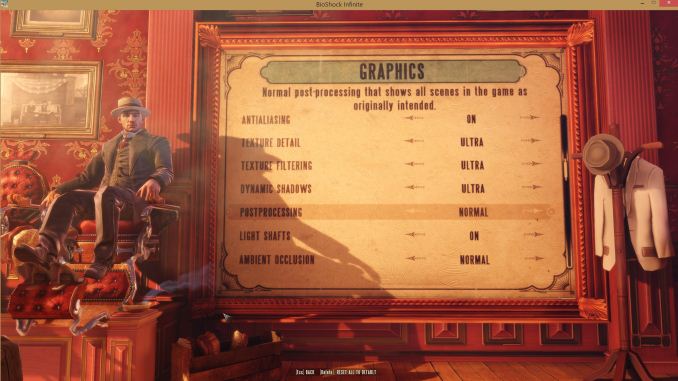
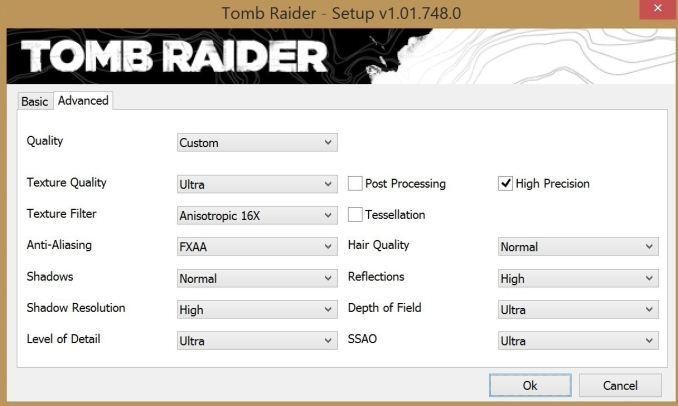








69 Comments
View All Comments
TiGr1982 - Friday, October 10, 2014 - link
Indeed, as a new buy, the unit with Kepler-based GTX 870M became instantly obsolete at the day of release of Maxwell-based GTX 970M.Only an uninformed buyer will buy this now. Or, alternatively, a large discount may help.
TiGr1982 - Friday, October 10, 2014 - link
And 8 GB of RAM for this kind of pricing is not a good offer either.Niavlys77 - Friday, October 10, 2014 - link
Would be great to see a comparison to the Lenovo Y50 - I know it's 1080p screen is terrible, but I'm wondering how the 4k screen holds up to this IGZO panel.Friendly0Fire - Friday, October 10, 2014 - link
I'm fine with my current laptop (Asus UX51), but in a year or two I could see myself upgrading to this. Nvidia's Maxwell will probably make a significant difference on battery life and heat on a machine like this, so I'm excited to see the 2015 refresh.dmunsie - Friday, October 10, 2014 - link
For the gaming performance section, would it be possible to get the rMBP in there as well? Perhaps not OS X, since there is a lot not available on the OS X side. But certainly running Windows 8.1 would be doable and nice to know.frostyfiredude - Friday, October 10, 2014 - link
It has a GT750m, expect around 60% of the performance gotten by the 2013 Blade 14.aferox - Friday, October 10, 2014 - link
Would like to see this compared with the Gigabyte Aorus X3 Plus.frelledstl - Friday, October 10, 2014 - link
I just don't get the fascination with these higher than 1080p displays on a gaming notebook when the hardware just doesn't support that resolution with playable frame rates in newer games. At minimum if you are going to benchmark at 1080p, we need some kind of analysis on how the display handles scaling down to the lower resolution. 14 inches to me is the best size for a portable gaming laptop, but I can't help but think that something like the W230ss is just a better value for the money by far with its still nice 1080p IPS screen.. You can get a decent configuration of that for $1200-$1400 with a nice sized SSD and since the SS version is there 2nd gen version of that laptop, they have included some nice power optimization improvements. I think 2k-4k gaming is great, on a desktop that might stand a chance at actually providing decent frame rates at high detail settings.XabanakFanatik - Sunday, October 12, 2014 - link
I'll tell you from personal experience that I have played games accidentally set to 1080p and did not realize I was not at native resolution. A more thorough analysis of scaling would be nice, but I have no complaints.synaesthetic - Monday, October 20, 2014 - link
I raised this point myself but I noticed the non-standard resolution of 3200x1800. That's exactly four times 1600x900, which *is* a standard resolution. The performance figures at 1080p suggest that this laptop would run most games extremely well at 1600x900 and since the resolution is divisible four times into the native resolution, it shouldn't have any fuzziness or loss of sharpness from interpolation.